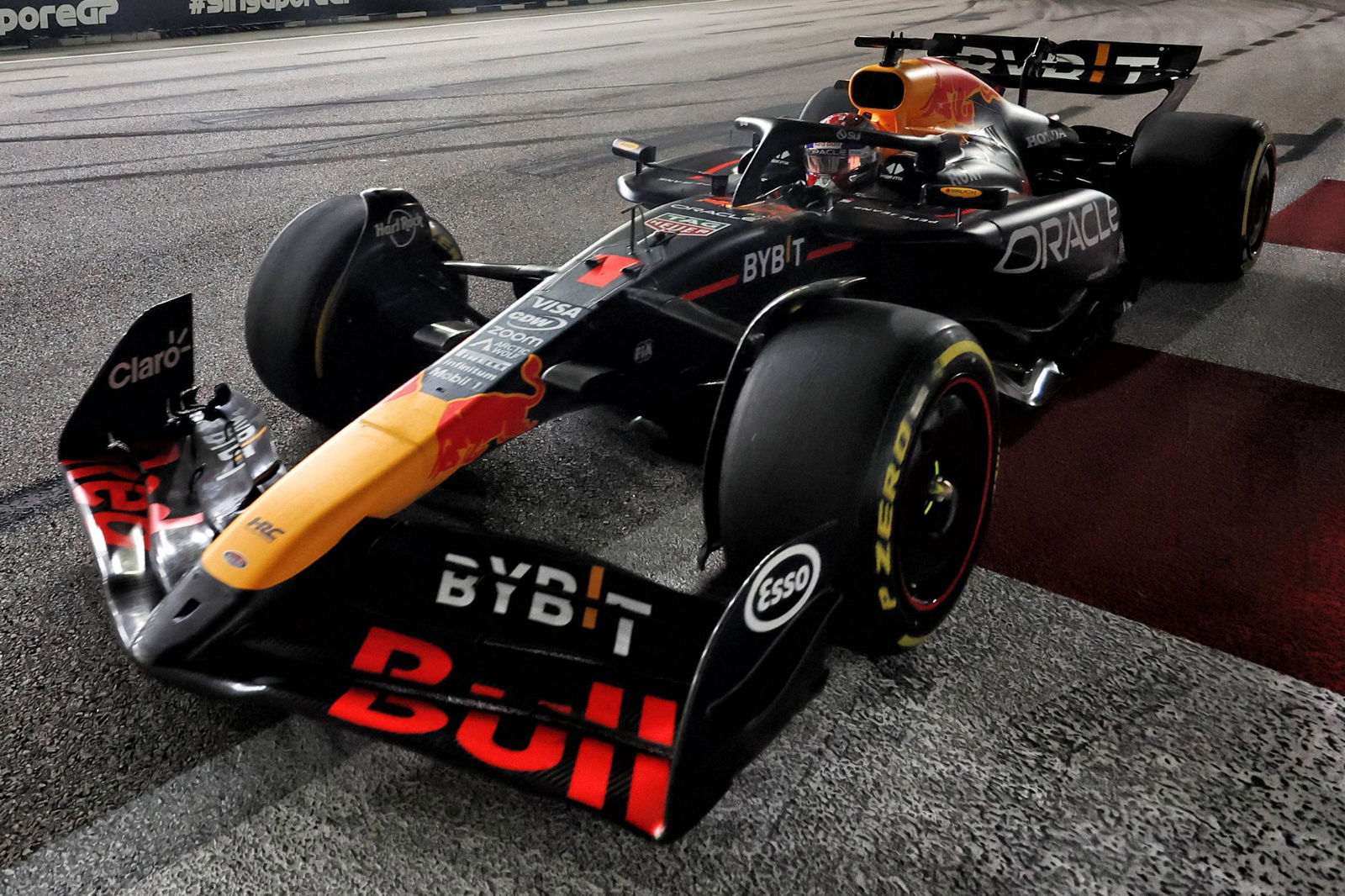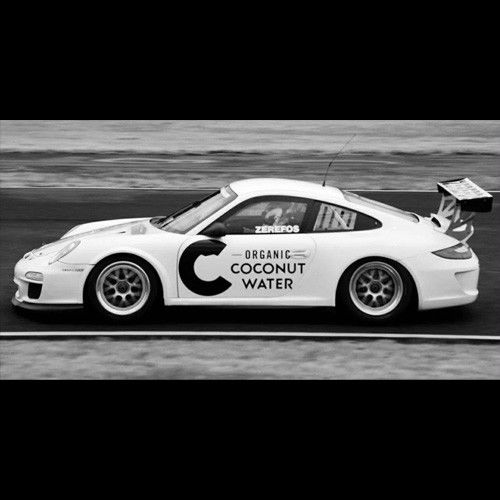

Having initially denied the concept questioned by the media, including Speedcafe, Red Bull Racing was subsequently identified and now confessed that it does indeed have an in-car ride height adjuster.
“Yes it exists although it is inaccessible once the car is fully assembled and ready to run,” a team representative confirmed.
“In the numerous correspondence we have with the FIA, this part came up and we have agreed a plan going forward.”
The device, located within the cockpit, adjusts the front bib of the car allowing the team to easily raise or lower the front ride height of the RB20.
It has been alleged, but not proven, that this device was used between qualifying and the race. Such action would be a breach of the sport’s Technical Regulations.
Speedcafe understands the device is manipulated through a pocket within the cockpit, though is not accessible while the driver is in the car.
There have been allegations within the paddock that it was used between qualifying and the race, potentially as recently as the Singapore Grand Prix.
“I don’t really, honestly, know much about it,” Piastri said of the device.
“For us, we’re obviously pushing the boundaries of the Technical Regulations, everyone is, that’s what makes F1 F1.
“But from what I’ve heard and been told, something like this is not pushing the boundaries, it’s clearly breaking them.
“I haven’t heard which car it’s on, or if it’s on any car…
“If it is something that’s being used, it’s clearly not been pushing the boundaries; it’s been out of the grey area, into the black area.”
The FIA yesterday released a statement addressing the matter and a solution has been found with Red Bull Racing.
It is similar in some respects to McLaren, which sported a rear wing that opened its slot gap at high speed even without DRS.
Used in the Azerbaijan Grand Prix, where it passed all scrutineering tests, the squad was asked by the FIA to modify the design following a complaint from Red Bull Racing.
“If there’s a big difference in performance, then clearly there’ll be some questions,” Piastri noted, drawing parallels with his team’s recent experience.
“Our mini-DRS, so to call it, was legal but, even though we’ve had to make some changes, it’s not revolutionary to the car.
“So we’ll see if it makes any impact.”
Piastri’s McLaren team-mate Lando Norris also spoke of the device, and questioned its impact.
The suggestion is that the device allowed Red Bull Racing to run a lower ride height during qualifying, when the car ran light on fuel and the focus was single lap pace.
The car could then be adjusted such that, for the race and with heavier fuel, the car was not at risk of exceeding plank wear allowances.
There is no evidence that Red Bull Racing has done such, though the potential existed.
“It’s one thing having it on your car. It’s another thing on how much you exploited and use it, which we have no idea on,” Norris said, referencing the potential impact it might have on his championship battle with Max Verstappen.
“So if it has been helping them, if they’ve been utilising it in a way people think they have, then maybe [the championship] will shift in our direction [now it’s been clarified].
“But when you talk about things like that, it’s not going to gain them… they’re not going to have got several pole positions or wins just because of such a device.
“I don’t think it really will change anything in the scheme of things.”
But like Piastri, nor feels such a solution would step over the line.
“It’s good that the FIA are doing such a thing,” he said.
“There’s a difference between black and white stuff like this, and there’s a difference between Formula 1 pushing the boundaries and creating new things and innovating within the space that you’re allowed to innovate.
“I think that’s what we, as McLaren, have done a very good job in, but we’ve shown not to go any further than that.”
With McLaren and Red Bull Racing locked in battle for both championships, the use of such a device would represent a significant risk.
Breaches of the Technical Regulations typically lead to exclusion, which could mark a significant swing in the points standings.
McLaren leads the constructors’ championship by 41 points, while Verstappen holds a 52-point advantage over Norris with six races, and three sprints, remaining this season.






















Discussion about this post